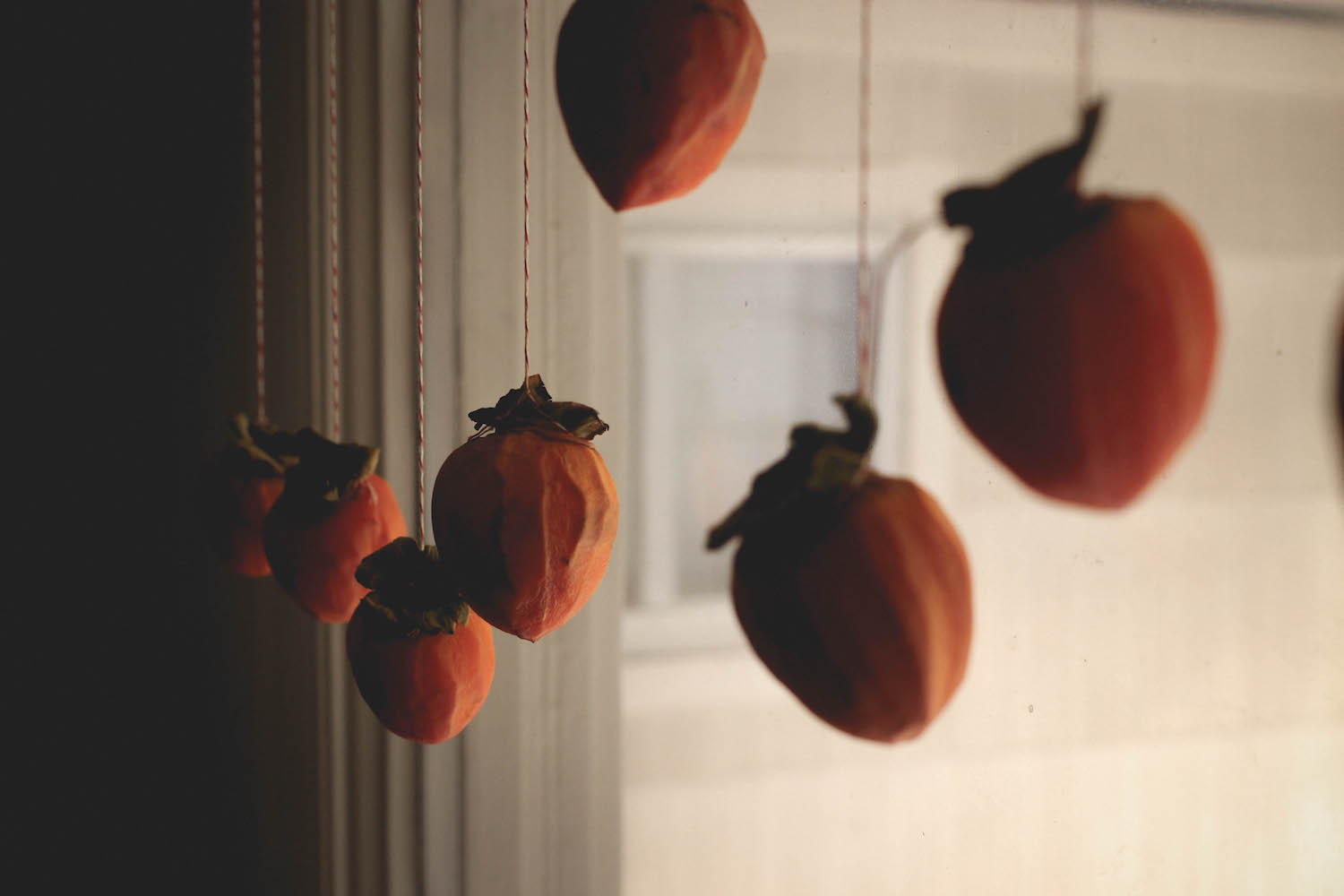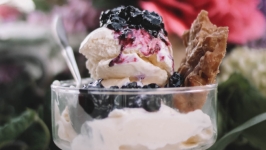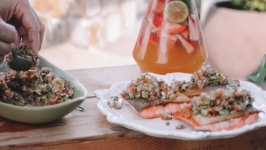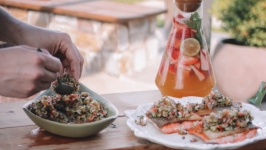Homemade Hoshigaki
These Japanese dried persimmons have a lingering caramelized sweetness that is delightful on its own, and pairs perfectly with autumn tea.
Meet hoshigaki, the Japanese dried fruit that as Saveur Magazine says, "lives a better, more pampered life than you." The striking delight of hoshigaki has not gone unnoticed, but is somewhat rare these days: Slow Food USA has placed hoshigaki in its Ark of Taste, "a living catalog of delicious and distinctive foods facing extinction."
While there is nothing particularly revolutionary about dried fruit in autumn, there is a magic in making hoshigaki— persimmons that are peeled and dried over a month's time. It takes patience, commitment, and tender, loving care to make the high-maintenance delicacy, but the end result is moist, rich, deeply sweet, and wildly unique in its own way.
To make your own, head to the Moscow Food Co-op's produce department and select firm persimmons with the stems in tact. Using a vegetable peeler, slowly remove the skin with minimal, smooth, and consistent strokes — this is the most gentle part of the process. Lasso the persimmon stems like we did here with butcher's twine. Hang them where they can air dry without touching. The fruit should be protected from dew, so a warm, dry environment like a sunny window is best. Please note: a place that receives direct sunlight may speed up the process, but you'll have to massage your hoshigaki more often.
After 7-10 days, give your fruit its first massage. A skin-like layer will have formed on the outside of the persimmon, which you will gently massage using the tips of your fingers to break up the inner pulp. Massage the fruit until the inside is squishy, being careful not to tear the skin. Check and rub the persimmons every three days, smoothing the edges and ensuring they dry evenly without forming hard ridges or pockets that can harbor moisture or mold. After three to five weeks, a white frost will have formed on the skin, the result of the sugar in the fruit rising to the surface. Your hoshigaki are ready when the pulp sets and you can no longer squish or manipulate them. The persimmons will look small, wrinkled, and dusted in sugar. Success! To store, break the stems and disconnect the strings. Seal them in a zip-lock bag and place them in the refrigerator or freezer.
Some people detect a subtle floral flavor in hoshigaki, while others are reminded of honey with a hint of cinnamon and gingerbread. We recommend them alongside green tea, or as an uncommon addition to a cheese board. You could also make Sujeonggwa, a Korean tea made by simmering ginger and cinnamon sticks, and then adding sugar and dried persimmons. They make a great gift for the produce lover in your life, though after the labor and love, you might not want to share them at all.
Moscow Food Co-op | @moscowfoodcoop
This article was originally printed in Moscow Food Co-op's magazine, Rooted.









